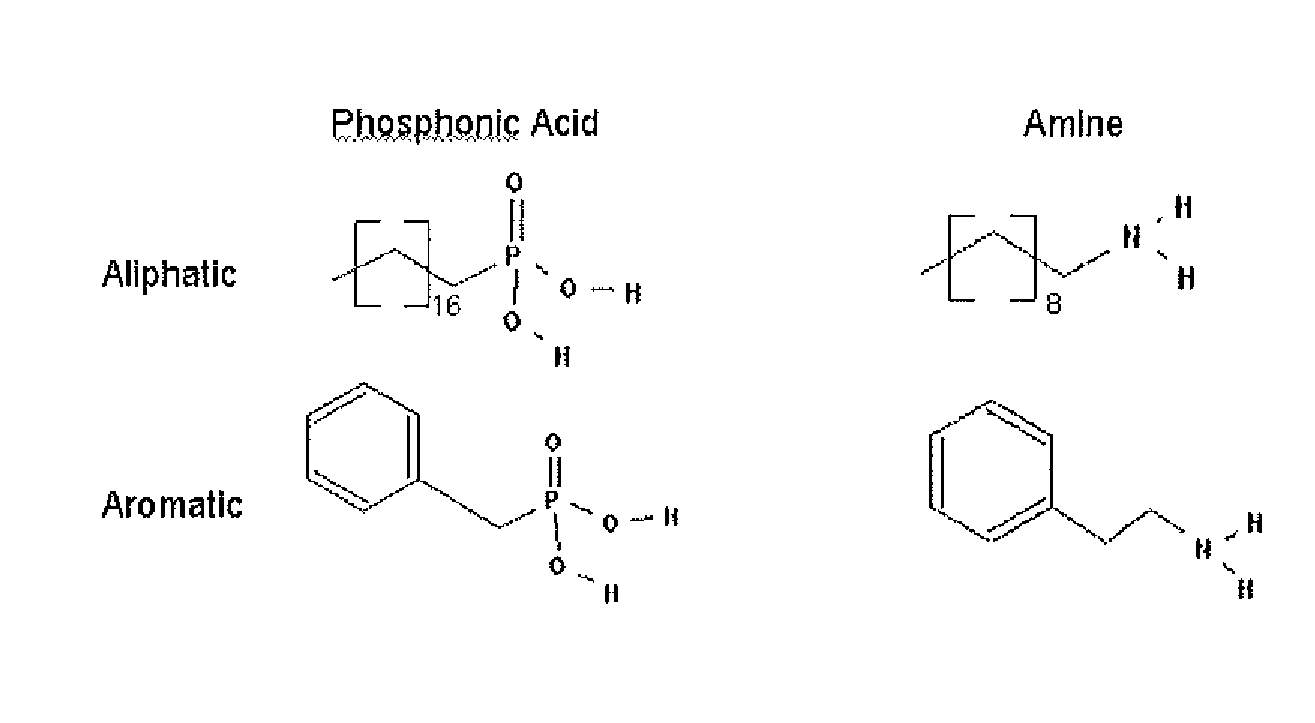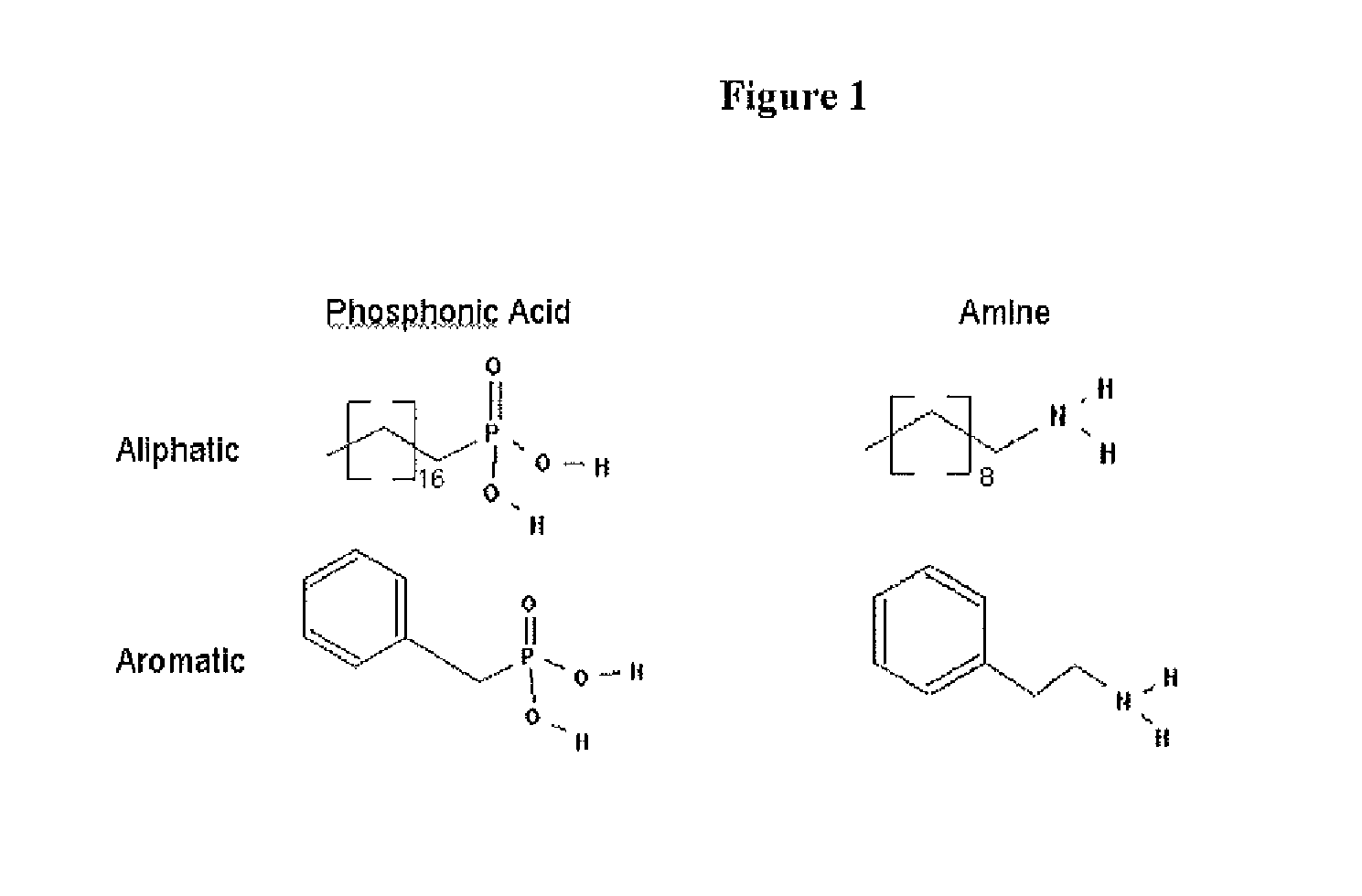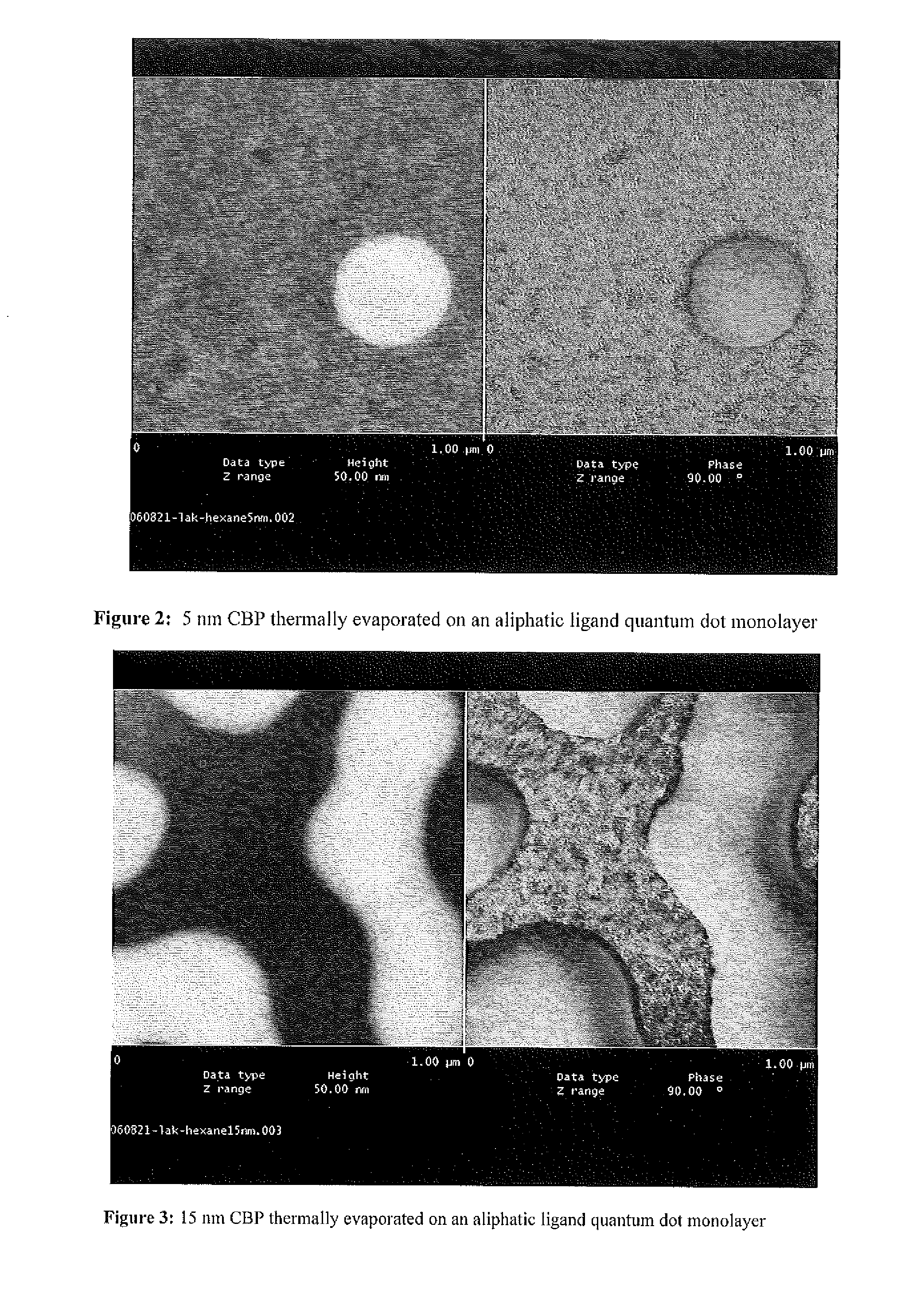Functionalized nanoparticles and method
a nanoparticle and functional technology, applied in the field of nanoparticles, can solve the problems of limiting the technique to biological tagging and imaging, reducing the emission efficiency and stability, and limiting the technique to aqueous based applications
- Summary
- Abstract
- Description
- Claims
- Application Information
AI Technical Summary
Benefits of technology
Problems solved by technology
Method used
Image
Examples
example 1a
[0182]Performing the overcoating procedure with TOPO as the solvent, replacing the existing aliphatic phosphonic acid and amine species with aromatic derivatives (see FIG. 1) results in semiconductor nanocrystals that have new surface chemistry while maintaining their optical properties. These semiconductor nanocrystals are no longer soluble in hexane, but are readily soluble in toluene and chloroform. In addition, thin films of organic molecules can be reliably deposited onto ordered films of these synthetically modified nanocrystals without the “puddling” associated with traditional aliphatic semiconductor nanocrystal surface chemistry (see FIGS. 2-5). It is believed that a phosphonic acid / amine salt is the predominant species on the surface of the semiconductor nanocrystal despite the fact that TOPO is in large excess during the reaction.
[0183]Preparation of Aromatic Semiconductor Nanocrystals Capable of Emitting Red Light
[0184]Synthesis of Cc / Se Cores: 1 mmol cadmium acetate was...
example 1-b
[0188]Preparation of Semiconductor Nanocrystals Capable of Emitting Green Light
[0189]Synthesis of ZnSe Cores: 0.69 mmol diethyl zinc was dissolved in 5 ml, of tri-n-octylphosphine and mixed with 1 mL of 1 M TBP-Se, 28.9 mmol of Oleylamine was loaded into a 3-neck flask, dried and degassed at 90° C. for one hour. After degassing, the flask was heated to 310° C. under nitrogen. Once the temperature reached 310° C., the Zn solution was injected and the reaction mixture was heated at 270° C. for 15-30 minutes while aliquots of the solution were removed periodically in order to monitor the growth of the nanocrystals. Once the first absorption peak of the nanocrystals reached 350 nm, the reaction was stopped by dropping the flask temperature to 160° C. and used without further purification for preparation of CdZnSe cores.
[0190]Synthesis of CdZnSe Cores: 1.12 mmol dimethylcadmium was dissolved in 5 mL of tri-n-octylphosphine and mixed with 1 mL of 1 M TBP-Se. In a 4-neck flask, 41.38 mmol ...
example 1-c
[0192]Preparation of Semiconductor Nanocrystals Capable of Emitting Red Light
[0193]Synthesis of CdSe Cores: 1 mmol cadmium acetate was dissolved in 8.96 mmol of tri-n-octylphosphine at 100° C. in a 20 mL vial and then dried and degassed for one hour. 15.5 mmol of trioctylphosphine oxide and 2 mmol of octadecylphosphonic acid were added to a 3-neck flask and dried and degassed at 140° C. for one hour. After degassing, the Cd solution was added to the oxide / acid flask and the mixture was heated to 270° C. under nitrogen. Once the temperature reached 270° C., 8 mmol of tri-n-butylphosphine was injected into the flask. The temperature was brought back to 270° C. where 1.1 mL of 1.5 M TBP-Se was then rapidly injected. The reaction mixture was heated at 270° C. for 15-30 minutes while aliquots of the solution were removed periodically in order to monitor the growth of the nanocrystals. Once the first absorption peak of the nanocrystals reached 565-575 nm, the reaction was stopped by cooli...
PUM
 Login to View More
Login to View More Abstract
Description
Claims
Application Information
 Login to View More
Login to View More - R&D
- Intellectual Property
- Life Sciences
- Materials
- Tech Scout
- Unparalleled Data Quality
- Higher Quality Content
- 60% Fewer Hallucinations
Browse by: Latest US Patents, China's latest patents, Technical Efficacy Thesaurus, Application Domain, Technology Topic, Popular Technical Reports.
© 2025 PatSnap. All rights reserved.Legal|Privacy policy|Modern Slavery Act Transparency Statement|Sitemap|About US| Contact US: help@patsnap.com



